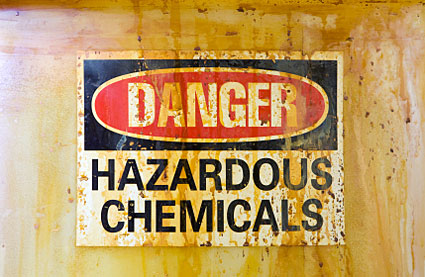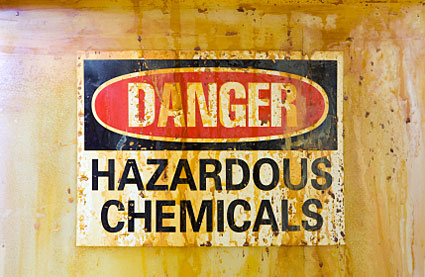 Last week, and capping at least a decades-long battle by consumer advocates, the EPA announced a ban on the pesticide endosulfan — one of the last legal organochlorine pesticides, a notorious group of which DDT is a member. Horrifically toxic (possibly more toxic to humans than DDT) and banned in the European Union since 2007, endosulfan remains in common — though technically restricted — use, especially on Florida tomatoes* and California and Nevada cotton according to the Pesticide Action Network. An article in Environmental Health News presents a much longer list of uses, including melons, cucumbers, squashes, potatoes, apples, blueberries, eggplant, lettuce, and other leafy vegetables, pears, peppers, and stone fruit and cotton.
Last week, and capping at least a decades-long battle by consumer advocates, the EPA announced a ban on the pesticide endosulfan — one of the last legal organochlorine pesticides, a notorious group of which DDT is a member. Horrifically toxic (possibly more toxic to humans than DDT) and banned in the European Union since 2007, endosulfan remains in common — though technically restricted — use, especially on Florida tomatoes* and California and Nevada cotton according to the Pesticide Action Network. An article in Environmental Health News presents a much longer list of uses, including melons, cucumbers, squashes, potatoes, apples, blueberries, eggplant, lettuce, and other leafy vegetables, pears, peppers, and stone fruit and cotton.
Endosulfan also easily spreads through the air (no doubt like the nerve gases from which pesticides such as this were derived). A 2008 National Park Service report found significant levels of endosulfan throughout the ecosystems of the West’s National Parks, even when there was no nearby agricultural use. A Scientific American article observed that, unlike its organochlorine brethren, endosulfan’s environmental concentrations “have been increasing since the 1980s in the Arctic and in other remote ecosystems.” As a result of all this and along with other data released during the EPA’s lengthy re-examination of the pesticide, California declared endosulfan to be a “toxic air contaminant” in 2008.
In short, good riddance.
You really have to question the length of time it took to get a product as dangerous as endosulfan off the shelf. And let’s be clear, the EPA still must “negotiate” with endosulfan’s producer Makhteshim Agan in order to avoid a long phaseout; if the company balks, and to be fair there’s no indication at this time that they will, endosulfan could stay on the market for an extended period. Assuming that doesn’t happen and it soon becomes unavailable in the U.S., endosulfan remains in use in India and Australia.
And this one victory must be considered against the thousands of toxic chemicals that continue to surround poison us. A case in point is the about-to-be-approved pesticide methyl iodide — even more toxic than methyl bromide, the chemical it replaces. Unless California’s legislature acts quickly, methyl iodide will soon go into wide use on the state’s conventionally grown strawberry crops.
It’s hard to revel in the victory over one supertoxic pesticide when another shambles up right behind it. As Tom Philpott suggests, agribusiness seems to respond to regulations and resistance with yet more toxic chemical solutions to our “problems.”
*Florida agribusiness really doesn’t play nice. Let’s take a moment to review Florida’s recent agricultural lowlights in addition to exposing its farmworkers to endosulfan. First, there were the thousands of farmworkers in Immokalee (aka “the tomato capital of the United States”) kept in virtual slavery, exposed by then-Gourmet writer Barry Estabrook and our own Tom Philpott. Next, came the sad saga of the sugar industry’s role in the degradation of the Everglades and how it might snag a financial windfall in the plan to clear them up. And just the other week, we learned of the tragedy of pesticide-laden Apopka, Florida (Barry Estabrook, again), where agribusiness poisoned thousands of workers, then received its own bailout from the state government while the workers have been left to sicken and die on their own. Florida, what is your problem?



